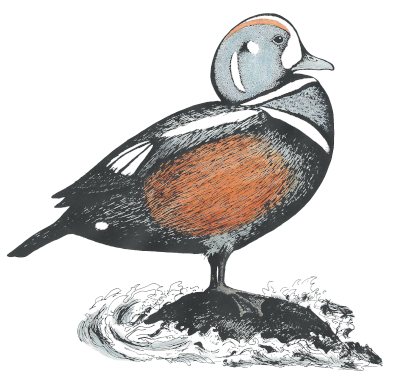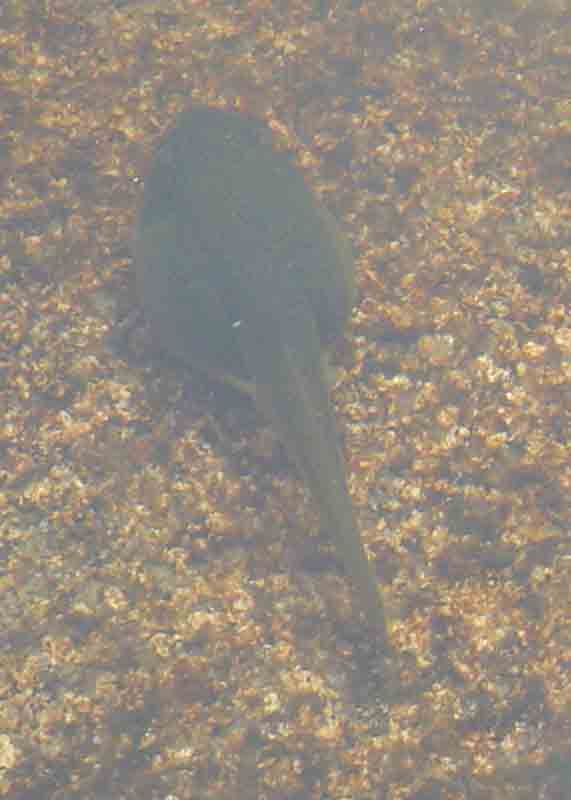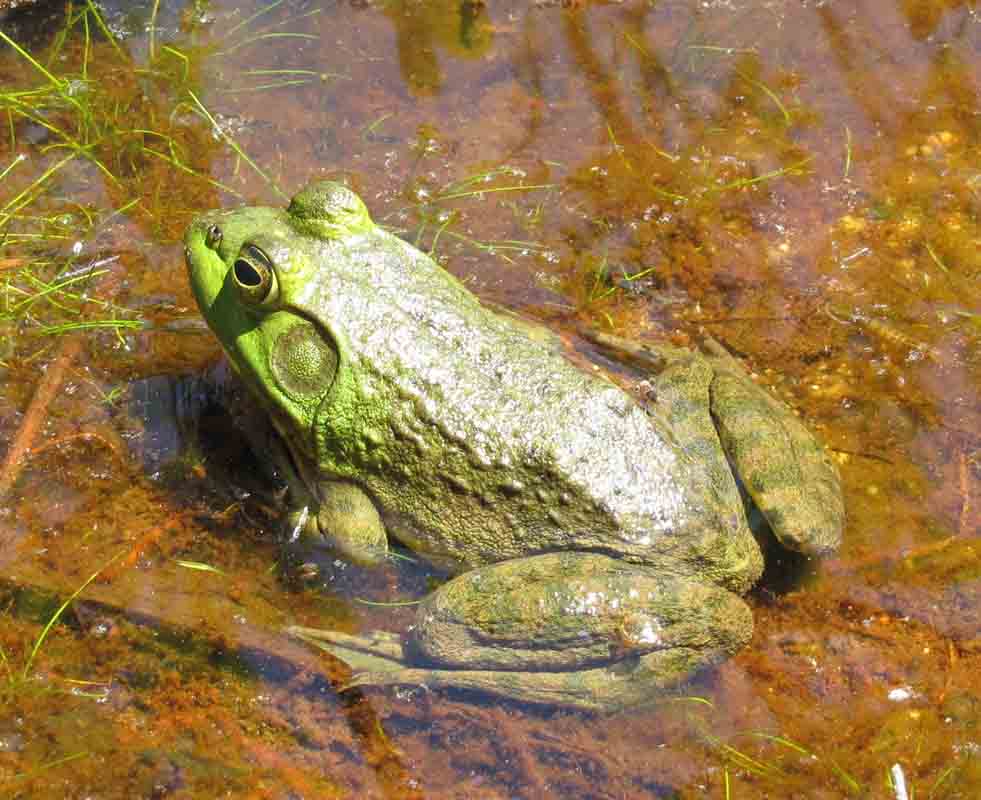
Maine is home to 9 species in 4 genera in 3 families. If you know which species you have or are interested in learning about, click on the appropriate link from the species list below. Otherwise, to determine which genus your Anuran belongs to, refer to the table below the species list.
Bufonidae (1 genus, 1 species)
Anaxyris americanus (American toad)
Hylidae (2 genera, 2 species)
Hylaeus versicolor (gray treefrog)
Pseudacris crucifer (spring peeper)
Ranidae (1 genus, 6 species)
Lithobates catesbeiana (bullfrog)
Lithobates clamitans (green frog)
Lithobates palustris (pickerel frog)
Lithobates pipiens (northern leopard frog)
Lithobates septentrionalis (northern leopard frog)
Lithobates sylvatica (wood frog)
| red font = character state unique or nearly so | parotid glands | toe pads |
| Anaxyris americanus | present | absent |
| Hylaeus versicolor | absent | present |
| Pseudacris crucifer | absent | |
| Lithobates | absent |
Bufonidae - A distinctive feature of this family is the presence of a pair of dorsal parotid glands.
Anaxyris
[information to be added]
Anaxyris americanus (American toad) - [information to be added]
Hylidae - Species in this family have round toe pads.
Hylaeus
[information to be added]
Hylaeus versicolor (gray treefrog) - [information to be added]
Pseudacris
[information to be added]
Pseudacris crucifer (spring peeper) - The vocalizing of the spring peepers is a sure sign of spring and is usually heard within days after the first wood frogs.
Ranidae - Members of this family do not have parotid glands (in contrast with the Bufonidae), and their toes taper to a point (unlike the rounded toes of the Hylidae).
Lithobates
[information to be added]
| red font = character state unique or nearly so | extent of dorsolateral ridges | dark brown “mask” | spots on back | char. 4 | char. 5 | char. 6 |
| L. catesbeiana | curving around tympanum | absent | absent | |||
| L. clamitans | from behind eyes to hind legs | absent | absent | |||
| L. palustris | from behind eyes to hind legs | absent | squarish, in two rows inside dorsolateral ridges | |||
| L. pipiens | from behind eyes to hind legs | absent | roundish, in two rows inside dorsolateral ridges | |||
| L. septentrionalis | from behind eyes to hind legs | absent | roundish, no distinct pattern | |||
| L. sylvatica | from behind eyes to hind legs | present | absent |
Lithobates catesbeiana (bullfrog) is the largest frog in Maine. Bullfrogs overwinter as adults or first- or second-year tadpoles (lower left), with the first-year tadpoles emerging first followed by second-year tadpoles and finally adults.The adult (below right) resembles a large green frog (Rana clamitans), but the bullfrog's dorsolateral ridges curve around its tympanum (vs. running the length of the back in the green frog).


(click on an image to enlarge)
Lithobates clamitans (green frog): The call of a green frog sounds like a loose banjo string being plucked.
.jpg)
(click on image to enlarge)
Lithobates palustris (pickerel frog): - [information to be added]
.jpg)
(photo by Alison P. Bell; click on image to enlarge)
Lithobates pipiens (northern leopard frog) - [information to be added]

(click on image to enlarge)
Lithobates septentrionalis (mink frog) - [information to be added]
Lithobates sylvatica (wood frog) - The wood frog is usually the first frog in Maine to be heard vocalizing in the spring. The sound is often described as quacking or clacking.
.jpg)
(photo by Carol Muth; click on image to enlarge)